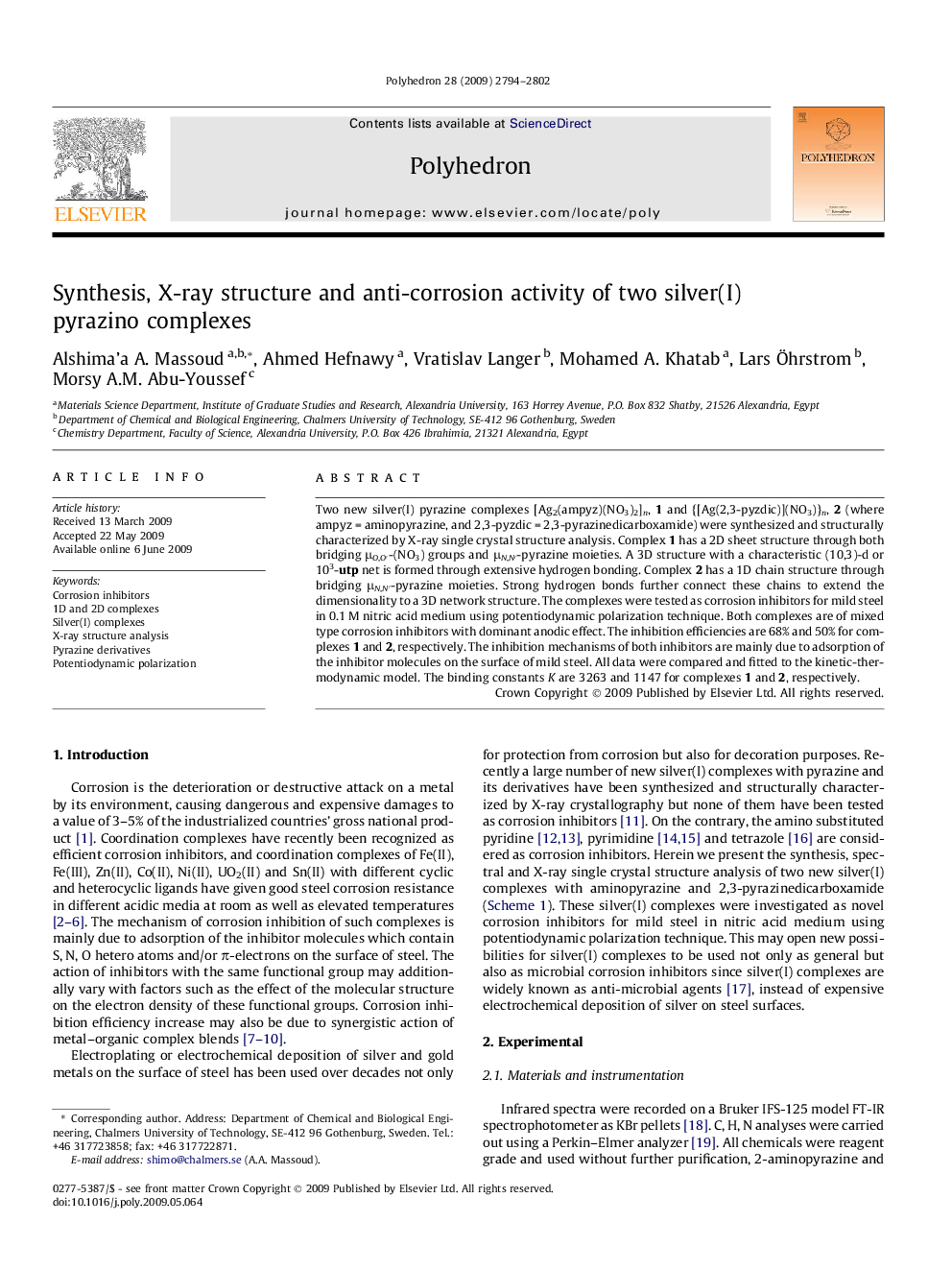| کد مقاله | کد نشریه | سال انتشار | مقاله انگلیسی | نسخه تمام متن |
|---|---|---|---|---|
| 1339718 | 979712 | 2009 | 9 صفحه PDF | دانلود رایگان |

Two new silver(I) pyrazine complexes [Ag2(ampyz)(NO3)2]n, 1 and {[Ag(2,3-pyzdic)](NO3)}n, 2 (where ampyz = aminopyrazine, and 2,3-pyzdic = 2,3-pyrazinedicarboxamide) were synthesized and structurally characterized by X-ray single crystal structure analysis. Complex 1 has a 2D sheet structure through both bridging μO,O′-(NO3) groups and μN,N′-pyrazine moieties. A 3D structure with a characteristic (10,3)-d or 103-utp net is formed through extensive hydrogen bonding. Complex 2 has a 1D chain structure through bridging μN,N′-pyrazine moieties. Strong hydrogen bonds further connect these chains to extend the dimensionality to a 3D network structure. The complexes were tested as corrosion inhibitors for mild steel in 0.1 M nitric acid medium using potentiodynamic polarization technique. Both complexes are of mixed type corrosion inhibitors with dominant anodic effect. The inhibition efficiencies are 68% and 50% for complexes 1 and 2, respectively. The inhibition mechanisms of both inhibitors are mainly due to adsorption of the inhibitor molecules on the surface of mild steel. All data were compared and fitted to the kinetic-thermodynamic model. The binding constants K are 3263 and 1147 for complexes 1 and 2, respectively.
Synthesis, X-ray single crystal structure analysis, elemental analysis as well as IR spectra for [Ag2(ampyz)(NO3)2]n, complex 1 and {[Ag(pyzdic)](NO3)}n, complex 2 are presented. The complexes show anti-corrosion behavior for mild steel in 0.1 M HNO3 medium. The anti-corrosion test is carried via potentiodynamic polarization technique. Both complexes are mixed type corrosion inhibitors with dominant anodic effect. Only complex 2 fits the Langmuir adsorption isotherm, K = 898. Both complexes fit to the kinetic-thermodynamic model, K1 = 3263 and K2 = 1147.Figure optionsDownload as PowerPoint slide
Journal: Polyhedron - Volume 28, Issue 13, 2 September 2009, Pages 2794–2802